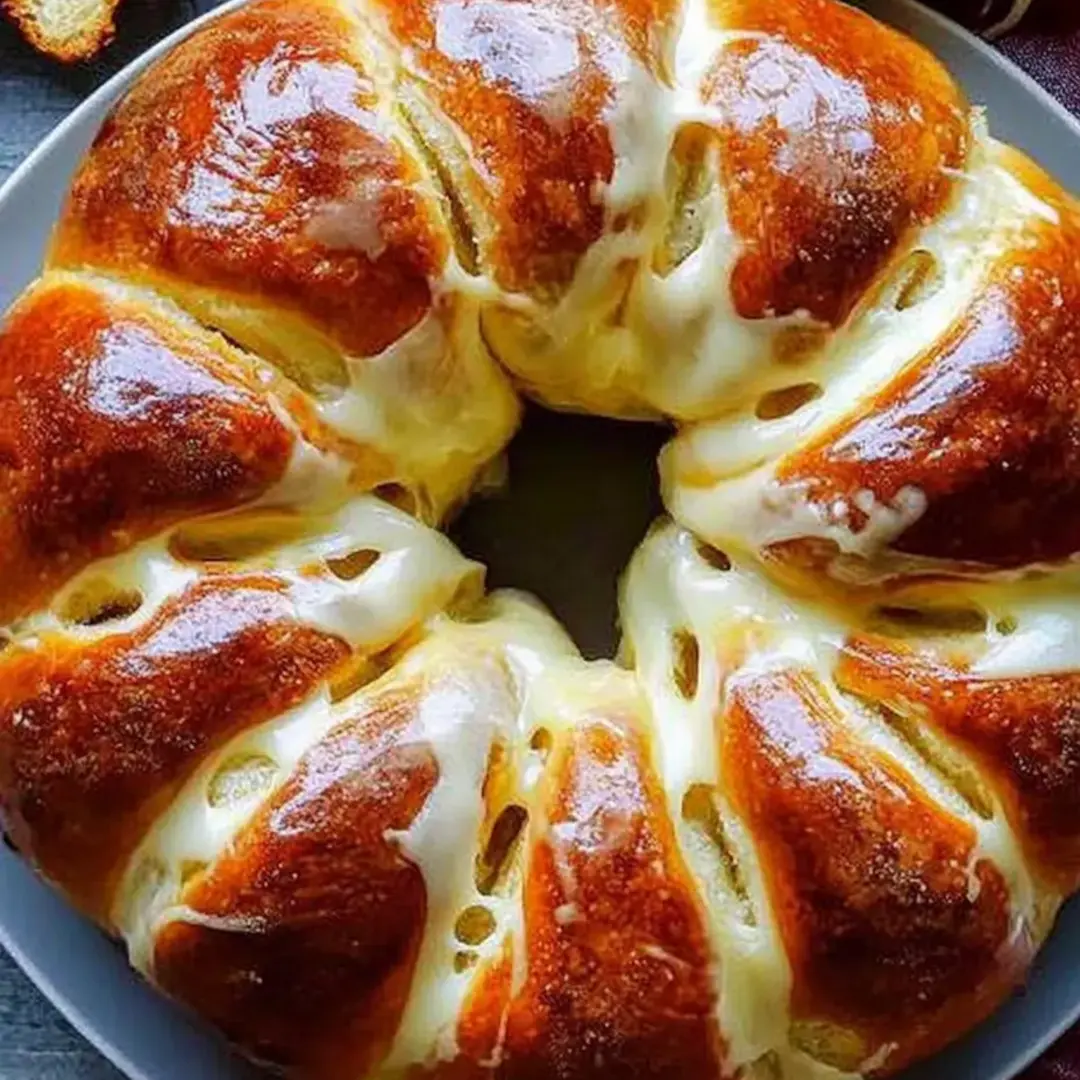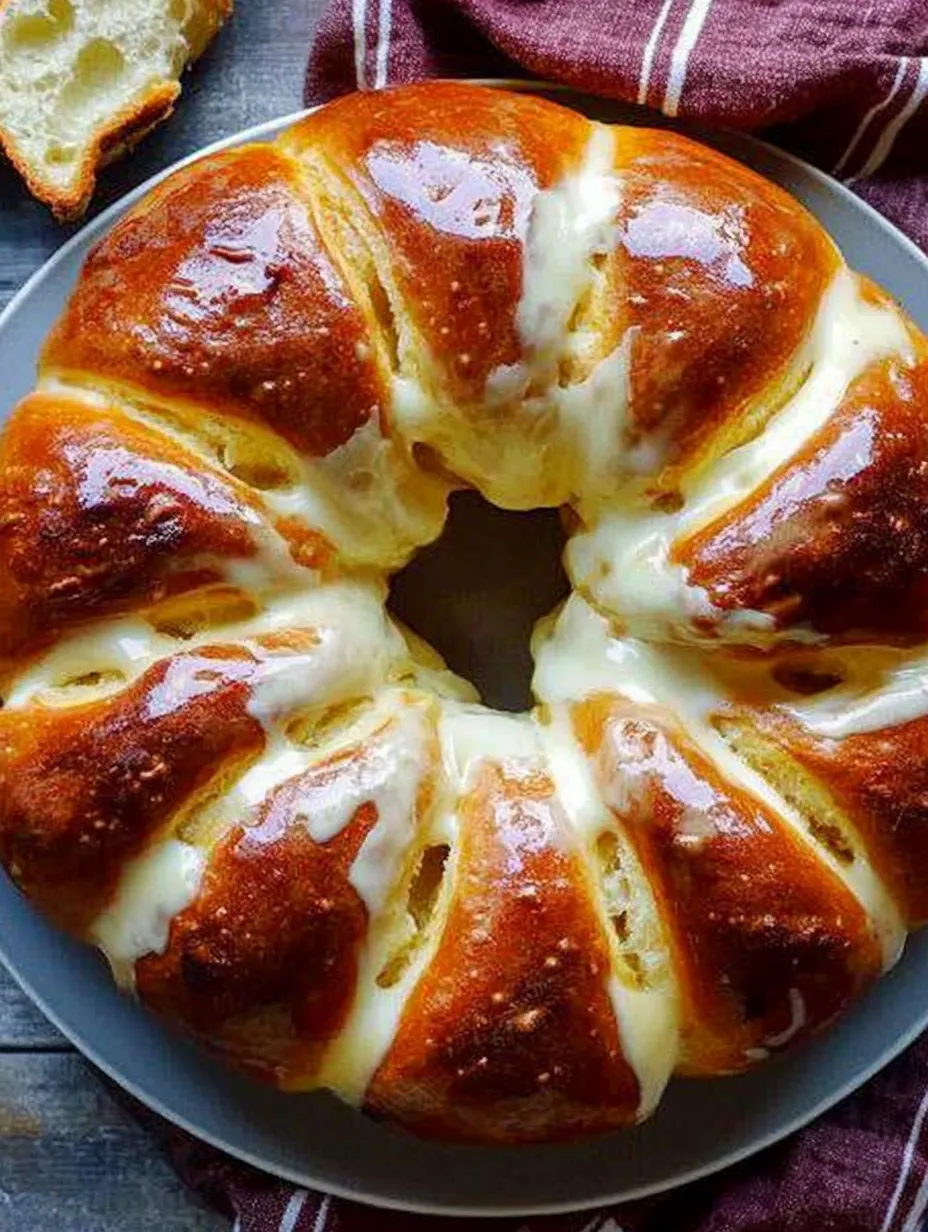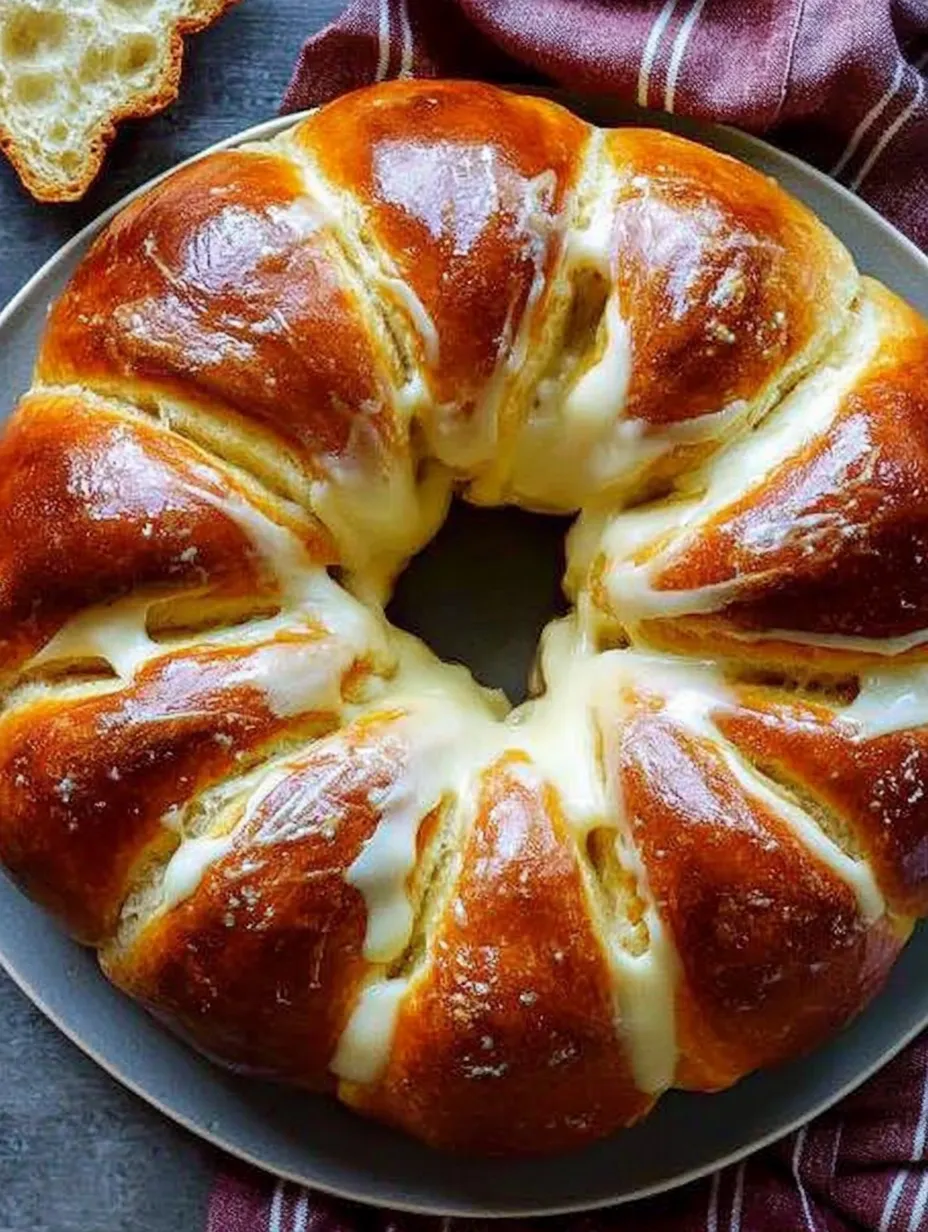 Pin it
Pin it
Cheesy Bundt Bread transforms simple ingredients into a showstopping centerpiece that's as beautiful as it is delicious. This pull-apart bread features pillowy dough balls coated in a savory blend of cheeses and herbs, all arranged in a stunning Bundt pattern that reveals itself when turned out onto a serving plate. The golden, crispy exterior gives way to a soft, tender interior with pockets of melted cheese and fragrant herbs in every bite. It's a versatile crowd-pleaser that brings the irresistible comfort of homemade bread to your table with an impressive twist that will have everyone reaching for seconds.
I first made this bread for a family potluck, placing it in the center of the table still warm from the oven. The conversation literally stopped as everyone reached for a piece, and my uncle—who rarely comments on food—asked for the recipe before dinner was even over! Now it's requested at every gathering.
Ingredients
- All-purpose flour: Creates the structure of the bread; choose a good quality brand for best results
- Active dry yeast: The leavening agent that makes the bread rise; check expiration dates for freshness
- Granulated sugar: Feeds the yeast and helps with browning; regular white sugar works perfectly
- Salt: Enhances flavor and controls yeast activity; kosher salt provides clean flavor
- Warm milk: Activates the yeast and creates tender bread; temperature should be 110-115°F (neither too hot nor too cool)
- Unsalted butter: Adds richness and flavor; using unsalted lets you control the salt level
- Egg: Provides structure, color, and richness; room temperature is best for even incorporation
- Cheddar cheese: The star flavor component; use sharp cheddar for more pronounced cheese flavor
- Parmesan cheese: Adds nutty depth and saltiness; freshly grated provides better flavor than pre-grated
- Fresh parsley: Brings brightness and color; flat-leaf Italian parsley has more flavor than curly
- Garlic powder: Infuses the dough with savory notes; use fresh powder for best flavor
- Dried oregano: Adds aromatic, Mediterranean flavor; crush between your fingers before adding to release oils
 Pin it
Pin it
Cooking Instructions
- Step 1:
- Prepare the dough properly - In a large mixing bowl, whisk together 2½ cups all-purpose flour, 2 teaspoons active dry yeast, 1 tablespoon granulated sugar, and 1 teaspoon salt until well combined. In a separate microwave-safe measuring cup, warm 1 cup of milk to 110-115°F (warm but not hot – it should feel like bath water). Add ¼ cup melted unsalted butter and 1 beaten egg to the warm milk, stirring to combine. Pour this wet mixture into the flour mixture and stir with a wooden spoon until a shaggy dough forms. The dough should be soft and slightly sticky, but still manageable. If it's too sticky, add flour 1 tablespoon at a time until it reaches the right consistency.
- Step 2:
- Develop the gluten through kneading - Turn the dough out onto a lightly floured surface. Knead by pushing the dough away from you with the heel of your hand, folding it back toward you, giving it a quarter turn, and repeating. Continue kneading for about 5 minutes until the dough becomes smooth, elastic, and springs back when lightly pressed with a finger. This kneading process develops the gluten, which gives the bread its structure and chewy texture. Form the dough into a ball and transfer it to a large greased bowl, turning once to coat all sides with oil.
- Step 3:
- Allow for proper rising - Cover the bowl with a clean kitchen towel or plastic wrap and place it in a warm, draft-free spot to rise. Ideal rising temperature is around 75-85°F. Let the dough rise for about 1 hour, or until it has doubled in size. You can tell it's ready when you gently poke it with your finger and the indentation remains. While the dough is rising, prepare your cheese mixture by combining 2 cups shredded cheddar cheese, ½ cup grated Parmesan cheese, 1 tablespoon chopped fresh parsley, 1 teaspoon garlic powder, and 1 teaspoon dried oregano in a medium bowl. Mix well to ensure even distribution of herbs and cheeses.
- Step 4:
- Shape and coat the dough balls - Once the dough has doubled in size, punch it down gently to release excess air bubbles. Turn it out onto a lightly floured surface and divide it into approximately 24-30 equal pieces, each about the size of a golf ball. You can use a bench scraper or knife to help with dividing. Take each piece and roll it between your palms to form a smooth ball. Then roll each ball in the cheese and herb mixture, pressing gently to help the coating adhere. Make sure each piece is well coated for maximum flavor throughout the bread.
- Step 5:
- Arrange and bake for perfect texture - Thoroughly grease a 10-12 cup Bundt pan with butter or cooking spray, making sure to get into all the crevices to prevent sticking. Arrange a layer of cheese-coated dough balls in the bottom of the pan, then sprinkle with some of the remaining cheese mixture. Continue layering dough balls and cheese until all pieces are used, ending with a sprinkle of cheese on top. Cover the pan with a towel and let the dough rise again for about 30 minutes, or until the balls have puffed up and are touching. Preheat your oven to 375°F and bake for 25-30 minutes until the top is golden brown and the internal temperature reaches 190°F. Let the bread cool in the pan for 5 minutes, then invert onto a serving plate. Serve warm for the best melty cheese experience.
I particularly love how the grated Parmesan creates little crispy edges on the dough balls. My family fights over these pieces! We've started a tradition of making two loaves – one with the recipe as written, and a second with some diced jalapeños mixed into the cheese blend for those who like a spicy kick. Both disappear equally fast!
 Pin it
Pin it
Perfect Pairings
This Cheesy Bundt Bread is incredibly versatile and pairs beautifully with a variety of dishes. Serve it alongside a hearty tomato-based soup like minestrone or a classic marinara-based pasta for a comforting Italian-inspired meal. The bread is substantial enough to stand up to rich stews and chilis, with the cheese and herbs complementing those robust flavors. For a lighter option, pair it with a crisp green salad dressed with a simple vinaigrette – the contrast between the fresh vegetables and the warm, cheesy bread creates a balanced meal.
The bread also works wonderfully as an appetizer or party food. Serve it with a small bowl of warm marinara sauce in the center of the Bundt ring for dipping. For a special touch at dinner parties, place a ramekin of herb-infused olive oil in the center for guests to dip their pieces. The pull-apart nature makes it perfect for sharing and encourages conversation around the table.
Troubleshooting Tips
If your dough isn't rising properly, check that your yeast is fresh and that your milk was the right temperature. Too hot will kill the yeast, while too cool won't activate it. You can also try placing the bowl of dough on top of a preheating oven or in an oven with just the light on to create a warm environment.
For those who find the bread sticking to the Bundt pan despite greasing, try using a non-stick Bundt pan and coat it with a thin layer of flour after greasing. Alternatively, create a parchment paper sling by cutting strips of parchment and placing them across the bottom of the pan, leaving overhang on both sides to help lift the bread out.
There's something magical about placing this beautiful Cheesy Bundt Bread at the center of the table and watching people's faces light up with anticipation. The moment someone pulls off that first piece, revealing the steamy, cheesy interior with strings of melted cheese stretching between the pieces – it creates an instant sense of connection and comfort. This recipe has become much more than just a delicious bread in my family; it's a tradition that brings us together, encouraging us to slow down, share stories, and savor both the food and the company. In today's fast-paced world, there's something profoundly satisfying about creating something by hand that nourishes both body and soul.
Frequently Asked Questions
- → Can I make this bread ahead of time?
- Yes, you can prepare the dough up to the first rise and refrigerate it overnight. Let it come to room temperature before shaping the balls. You can also fully bake the bread, then reheat it covered with foil at 325°F for about 10-15 minutes before serving.
- → What if I don't have a Bundt pan?
- If you don't have a Bundt pan, you can use a large loaf pan or a casserole dish. The shape will be different, but the taste will still be delicious. Adjust baking time accordingly - a shallower pan may require less time.
- → Can I use different cheeses?
- Absolutely! You can substitute other melting cheeses like mozzarella, Gouda, or Swiss for the cheddar. For the Parmesan, any hard, aged cheese like Romano or Asiago would work well. Just keep the total amount of cheese the same.
- → What herbs work best with this recipe?
- While the recipe calls for parsley and oregano, you can experiment with other herbs like thyme, rosemary, basil, or chives. Fresh herbs will give more flavor, but dried herbs work well too - just remember that dried herbs are more potent than fresh.
- → How do I know when the bread is fully baked?
- The bread should be golden brown on top and a toothpick inserted into the center should come out clean without any raw dough. If you have an instant-read thermometer, the internal temperature should reach about 190°F (88°C).
